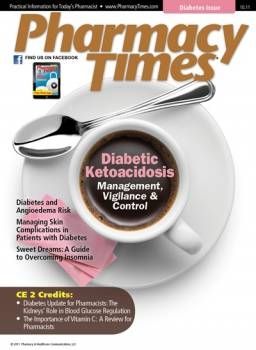Publication
Article
Pharmacy Times
Asthma Watch
Sales of Inhalers Containing CFCs to Cease
The FDA recently announced that in compliance with obligations made under the Montreal Protocol on Substances that Deplete the Ozone Layer, epinephrine inhalers containing chlorofluorocarbons (CFCs) will not be made or sold after Dec. 31, 2011.
Epinephrine inhalers, marketed by Armstrong Pharmaceuticals, Inc as Primatene Mist, are the only FDA-approved OTC inhalers for the temporary relief of occasional symptoms of mild asthma. Patients who currently use these products are urged to contact their health care provider to discuss switching to a different medication.
The FDA began phasing out CFC-containing inhalers in 2008. Since then, several manufacturers of prescription inhalers have converted their propellants to environmentally friendly hydrofluoroalkane (HFA). Although there is currently no HFA version of epinephrine inhalers, there are a number of other safe and effective inhalers—all of which require a prescription—to treat asthma symptoms.
The FDA also announced that 2 prescription inhalers— Combivent Inhalation Aerosol (albuterol/ipratropium) and Maxair Autohaler (pirbuterol)—will be withdrawn from the market on December 31, 2013, if they are not reformulated with HFA or another acceptable propellant.
Pharmacists should advise patients currently using OTC inhalers to contact their provider to have symptoms evaluated and obtain prescription asthma medications if needed.
The FDA is encouraging health care providers to help patients understand their payment options and company assistance plans, and to educate patients in using their new prescription inhalers.
Study Demonstrates the Power of the Placebo Effect
The placebo effect may be more powerful in treating asthma exacerbations than previously believed, according to findings from a study published July 14, 2011, in the New England Journal of Medicine. The investigators conducted a double-blind study in which 46 patients with asthma were randomly assigned to active treatment with an albuterol inhaler, a placebo inhaler, sham acupuncture, or no intervention at all. During an exacerbation, 1 of the 4 treatments was administered.
Treatment with albuterol yielded a 20% increase in FEV1, which was significantly higher than the results produced by nonpharmacologic treatments. However, patients’ subjective reports of improvement from albuterol did not differ significantly from the improvements reported from use of the placebo inhaler and sham acupuncture. The subjective improvement in those 3 interventions was significantly greater than in those who received no intervention.
Researchers concluded that although albuterol demonstrated improved FEV1 in patients with asthma, it provided no added benefit when it came to patient-reported outcomes. Therefore, “Subjective improvement in asthma should be interpreted with caution and objective outcomes should be more heavily relied on for optimal asthma care,” they wrote. “Indeed, although improvement in objective measures of lung function would be expected to correlate with subjective measures, our study suggests that in clinical trials, reliance solely on subjective outcomes may be inherently unreliable.” PT
Bronchial Therapy Offers New Hope for Treating Refractory Asthma
An article published in the July 2011 issue of the Cleveland Clinic Journal of Medicine describes a potentially groundbreaking treatment for asthma that could be particularly beneficial to the estimated 5% to 10% of asthma patients who have severe disease that is refractory to medication therapy.
Bronchial thermoplasty—the application of radiofrequency energy to the airways—was recently approved by the FDA to treat severe refractory asthma that is not well controlled by high-dose inhaled corticosteroids and long-acting bronchodilator therapy. In bronchial therapy, which requires 3 sessions separated by 2 to 3 weeks to complete, the left lower lobe, the right lower lobe, and the 2 upper lobes of the lungs are treated separately. The thermal energy reduces excess airway smooth muscle, which helps prevent the restriction of the airway.
In clinical trials, bronchial thermoplasty has produced positive clinical outcomes in patients with severe refractory asthma. After thermoplasty, forced expiratory volume in 1-second (FEV1) scores were higher at the 12-week mark and at the 1-year mark than at baseline. Prior to therapy, patients reported that 50% of their days were symptom-free; 12 weeks after bronchial thermoplasty, the number of symptom-free days increased to 73%. Airway hyperresponsiveness also decreased significantly from baseline 12 weeks after treatment.
Although the initial findings have been positive, further research is needed to examine the long-term effects of bronchial thermoplasty treatment, the authors wrote. They also noted that continued study of the role of airway smooth muscle function in asthma could lead to the development of other innovative treatments for pulmonary conditions.
Fast Fact: Asthma is the leading cause of missed school days among children 5 to 17 years.







